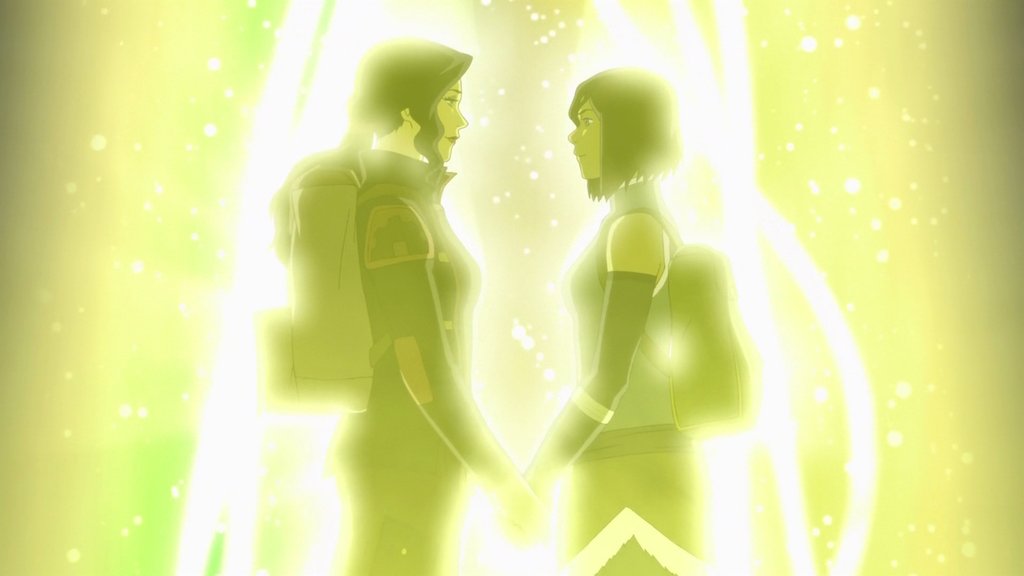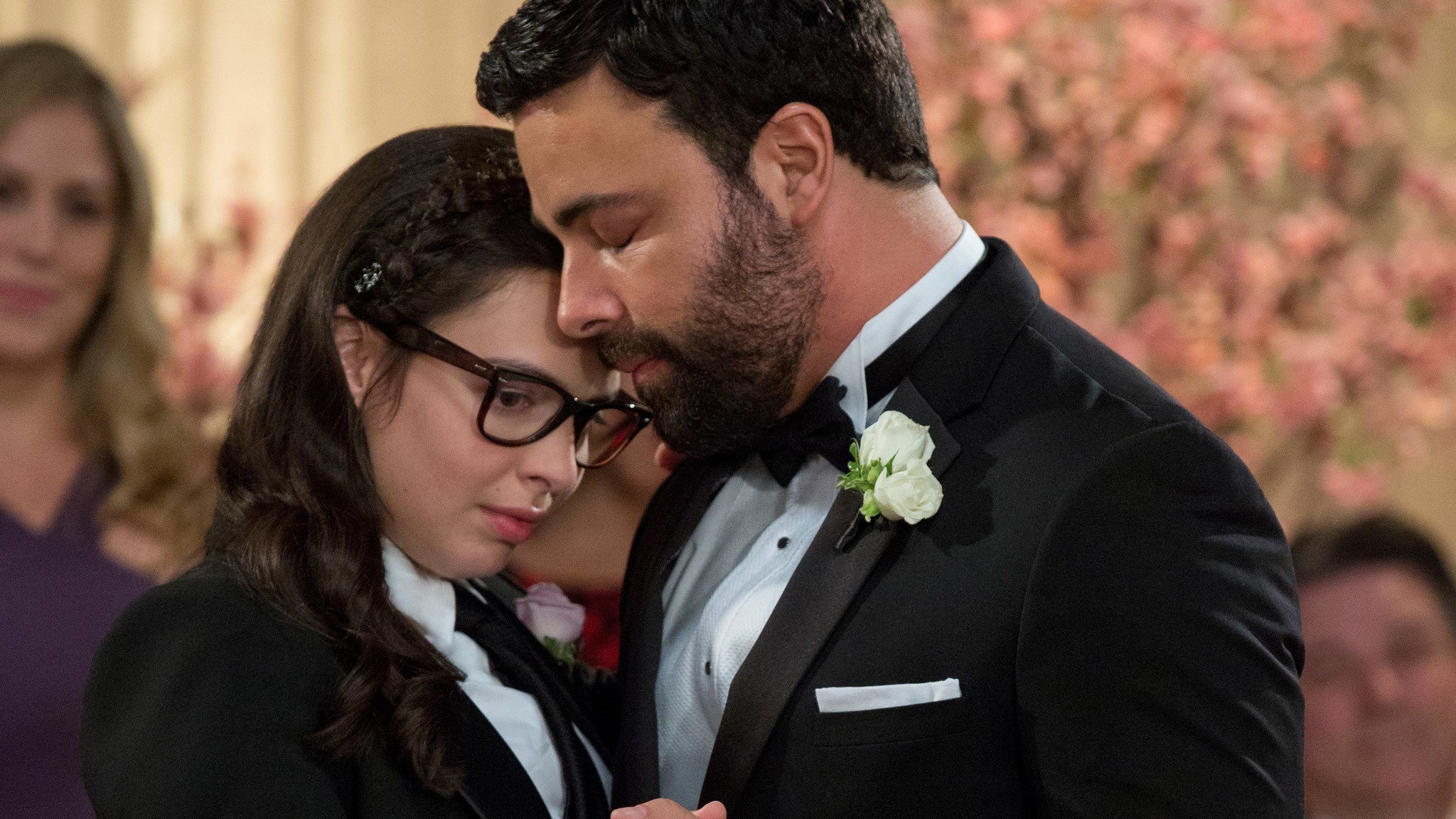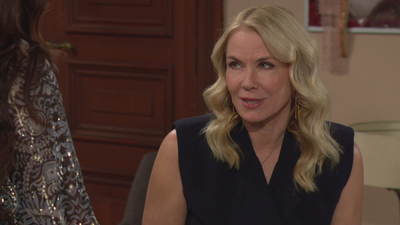Our favorite LGBTQ+ moments in television history
Good news: There were too many to include all of them

One of our favorite mediums here is TV, thanks to the breadth of stories you can check out and the experiences you can witness. This is especially important during Pride Month, where we want to celebrate the LGBTQ+ community and the progress its made over the past few decades. To do that, why not pop on your favorite inclusive show or rewatch some of your favorite moments?
TV has had a rocky relationship with LGBTQ+ representation, with a lot of moments that are often sanitized for advertisers or networks. So a lot of the moments on this list are celebrated simply for existing. A lot of them could even be seen as coy or basic by today's standards, especially with some of the later moments on this list. However, that doesn't diminish how much they mattered to viewers at the time of their airing, or how they impacted TV. This is definitely not an exhaustive list, but here are just a few of our favorite moments, in chronological order.
My So Called Life — Rickie comes out as gay (Season 1, Episode 19)
Audiences always knew that Rickie Vasquez was a part of the LGBTQ+ community on My So-Called Life. Throughout the series' sole season, he dealt with a lot of issues that people in the community would be familiar with: abusive relatives, conflicts with trying to find where you feel comfortable to express yourself, and others. However, the character only came out as fully gay in the final episode after spending the series identifying as bisexual.
It wasn't surprising in hindsight, but Rickie as a character, and his coming out, are remembered fondly by TV watchers of the mid-90s. Just take a look at the clip above to get an idea of who Rickie was.
Deep Space Nine — Rejoined (Season 4, Episode 6)
Star Trek is Star Trek. It had the first interracial kiss on TV back in the 1960s. It's a downright iconic and groundbreaking franchise and that reputation extends far beyond the original series.
Deep Space Nine featured one of the earliest televised lesbian kisses on TV between Jadzia Dax and Dr. Lenara Kahn. Dax is one of the series' most intriguing characters, an alien species that swaps bodies, so while technically they're reliving a once heterosexual love, that doesn't seem to matter since the plot focuses on just the relationship. The episode is a beautiful look at what happens when you relive love once thought lost, but it was one of the first times a lot of people saw a same-sex kiss on screen as well.
Friends — The first lesbian wedding (Season 2, Episode 11)
Back in 1996, the sitcom was downright revolutionary. In the Season 2 episode "The One with the Lesbian Wedding" the gang attended — you guessed it — a lesbian wedding between Ross's ex-wife, Carol, and her partner, Susan. It was the second gay marriage seen on a TV sitcom (that honor goes to Roseanne ) but it was the first lesbian wedding.
What also made it such a big deal was that it wasn't treated as a gimmick; it was just something the titular friends were a part of. Back then, to have a wedding treated like it wasn't a big deal was unheard of.
The Ellen Show — Ellen comes out (Season 4, Episodes 22 and 23)
The Ellen Show flirted around with star Ellen Degeneres' sexuality for many seasons, having her date men. However, in the two-part "The Puppy Episode," which aired in 1997, the series finally confirmed that the character was gay, which then coincided with the real comedian's very public coming out.
This was a huge deal at the time, and the episode was a huge ratings success. But there was, of course, a lot of backlash. Advertisers backed out and right-wing groups complained. But worst of all, the actors involved in the episode had trouble finding work. Guest star Laura Dern said she couldn't find work for a year and a half after appearing on the episode.
But considering that since then Dern has won an Oscar and Degeneres has been one of the most successful talk show hosts of all time, we think it worked out OK.
Dawson's Creek — Jack and Tobey's long, romantic kiss (Season 4, Episode 20)
People in same-sex relationships had kissed on TV before, but it wasn't until Dawson's Creek that the kiss actually seemed to mean something.
Jack had already been a part of a gay kiss before, with his partner, Ethan, but his moment with Tobey was long and passionate. It wasn't just a peck. It was a full-blown smooch. It seems strange to rate kisses on TV in terms of how long and seemingly real they are, but back when TV execs and advertisers were deathly afraid of any representation on screen, it all means something more.
Buffy the Vampire Slayer — Willow and Tara kiss (Season 5, Episode 16)
It's tough to distill the iconic, groundbreaking relationship between Willow and Tara into one moment, but we're going to try. The couple, which began timidly in Buffy the Vampire Slayer's fourth season, became one of the first lesbian relationships many young viewers saw back in the early 2000s. And for a while, it was a dream. Them sharing a forlorn-and-emotional (but romantic!) kiss in Season 5's "The Body" was one of the first times audiences just saw a kiss not meant to boost ratings on screen. It was just something that happened. It was a part of them, and it was beautiful.
Of course, it would go downhill from there, but for a while, Willow and Tara was what we had.
The Wire — Omar Little (Season 1, Episode 6)
Omar Little is one of the greatest outlaw characters in modern television, and he broke ground by defying stereotypes in the black gay community.
Omar's sexuality was central to his character through all five seasons of The Wire, contrasting his intense robberies with calm embraces with his boyfriends out in front of his Baltimore row home. A critical moment for Omar comes in the sixth episode of Season 1, where Omar's first boyfriend, Brandon, is killed after a bounty placed on his head is doubled for him being gay.
This sets off Omar on a quest for revenge against a gang that lasts several seasons and leads him to become a street informant. -Roy Delgado
Legend of Korra — Korrasami (Season 4, Episode 13)
A genre often lagging behind in terms of LGBTQ+ representation is kids' animation. There have been huge strides made in this space thanks to cartoons like (Adventure Time and Steven Universe, but Legend of Korra was one of the first to have an on-screen canonical lesbian relationship.
Sure it came in the last minute of the show, but Korra and Asami going off into the Spirit World holding hands, looking into each other's eyes is a milestone moment in representation. Even more important was how open the showrunners were about the scene's intended purpose.
Hannibal — That finale (Season 3, Episode 13)
Hannibal had been toying the audience concerning the relationship between Will Graham and Hannibal Lecter since Season 1 and it often had a will they/won't they quality, with some accusing the show of queerbaiting. However, the show went completely for it in the final episode, not only confirming that the two had a love for each other, but that Hannibal's plan to turn Will into a monster actually worked (to an extent).
I won't spoil the finale, so watch the clip above at your own risk, but believe me when I say that screams were heard from Fannibals everywhere when they embraced each other.
Black Mirror — San Junipero (Season 3, Episode 4)
Black Mirror is a dark anthology — sometimes too dark for its own good — which is part of the reason why the episode "San Junipero" shines so brightly. It's also a lesbian love story about coming out, acceptance, feeling comfortable in your own skin (or lack thereof), the meaning of life and death, and so many other topics.
We can highlight this episode simply because it's uplifting and wonderfully written, but the relationship at its core feels real despite the futuristic tech on display. In a world where gay relationships are often met with tragedy, to have a happy ending with one feels groundbreaking on its own.
Crazy Ex-Girlfriend — Gettin' Bi (Season 1, Episode 14)
Crazy Ex-Girlfriend is a musical show that touches upon a lot of subjects, including mental illness and sexuality. It also just happens to have one of the best explanations of bisexuality on TV with the song "Gettin' Bi," sung by the character Daryl as he comes out to his coworkers.
It's a joyful proclamation of coming out, but it also breaks down some of the stereotypes concerning bisexual people in the process. Send this to anybody in your life who might not get what bisexuality is, and no, it doesn't mean you're just gay. Bi's legit!
One Day at a Time — Elena coming out (Season 1, Episode 10 and 11)

One Day at a Time is a prime example of how you remake a series. It takes the basic formula of the original sitcom and updates it for the modern age, and that includes some more modern problems, like racism, classism, mental illness, and coming out.
Elena Alvarez had been struggling with her sexuality for most of Season 1, but then she finally came out to her family in "Sex Talk." It took some getting used to by her family, but they eventually accepted her (minus her father) in a way that felt honest. Her sexuality then became just a part of her character as she was able to build a relationship with her non-binary partner.
How grounded One Day at a Time kept the story is what puts it on this list, even if it's imperfect. Her story later with her father (pictured above) only adds to her character.
Brooklyn 99 — Rosa Diaz comes out as bisexual (Season 5, Episode 10)
Brooklyn 99 already had great LGBTQ+ representation in the form of Captain Holt and his struggles to not only get recognized by the NYPD for his years of service as a gay black man but also became the best boss of the 99 ever.
When Rosa Diaz came out as bisexual on the show, however, it took the sitcom to a whole other level. Actress Stephanie Beatriz came out as bi not too long before her character, so that imbues the episode with a personal touch. The sensitivity with which the show handled the coming out though is imperfect, but it's sweet and shows that you can find a support system in the unlikeliest of places.
Steven Universe — Ruby and Sapphire's wedding (Season 5, Episode 23 and 24)
For a cartoon primarily aimed at children, Steven Universe is unabashedly queer. The show had featured same-sex relationships and commentary on gender expression since its first season, but no characters encompass that better than Ruby and Sapphire, a.k.a. Garnet when they fuse. The reveal that Garnet was in fact two Gems in love in the episode "Jail Break" was jaw-dropping, but they affirmed their love for each other with their wedding a few seasons later.
As we've previously discussed on this list, same-sex weddings are serious business when it comes to representation and the build-up and payoff to Ruby and Sapphire's wedding shows how important the relationship is to both the show and its characters.
It's Always Sunny in Philadelphia — Mac comes out as gay to his father (Season 13, Episode 10)
It's Always Sunny in Philadelphia isn't known for its sincerity, especially in those earlier seasons and when it came to Mac's sexuality. His homoerotic tendencies were treated as a joke early on, but he finally came out in Season 12 to his friends over a lottery ticket. (Yes, really.) It's when he truly embraces who he is in Season 13 and comes out to his father that the character becomes iconic.
In typical Sunny fashion, Mac puts on an interpretive dance that is actually extremely well-choreographed. While his real father rejects him, the true emotional crux of the scene comes when Frank, who's become Mac's surrogate father, finally understands and is in tears. It's Always Sunny isn't known for playing it straight ever, so it really punches you in the gut when it does.
Pose — Angel and Papi get engaged/Candy dies (Season 2, Episode 10)
Pose has been knocking down barriers in its quest for absolute TV domination, and that's especially true in its LGBTQ+ representation. It's rare to see a trans character on TV, although shows have been making huge strides on that front, and that certainly includes Pose.
Angel and Papi are so in love with each other, so when they propose to each other in the Season 2 finale it's just a joyous moment. In contrast, the death of Candy, also in Season 2, is a huge moment for how we talk about trans lives and the impact of the AIDS epidemic in the 1990s.
These two moments couldn't be any different, but they do show one thing: trans lives matter.
What did we miss?
There are so many moments and iconic shows we couldn't include. We wanted to put Will & Grace on here just for existing and introducing many Americans to gay lead characters. We had hoped to include some recent moments as well, like Harley Quinn and Poison Ivy becoming a canonical couple in the Harley Quinn animated series, or Catra and Adora's kiss saving the world in She-ra and the Princesses of Power.
What else did we miss?
Get the What to Watch Newsletter
The latest updates, reviews and unmissable series to watch and more!

